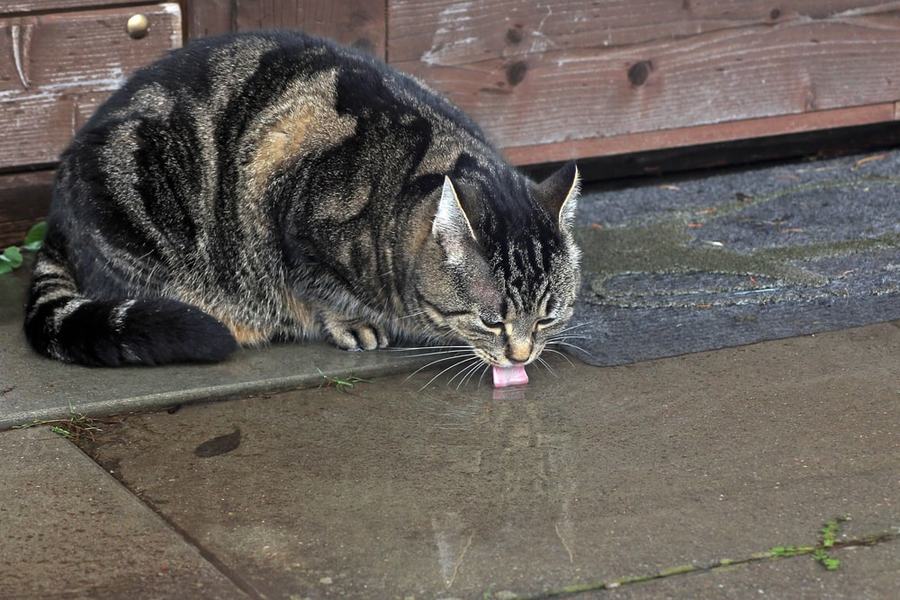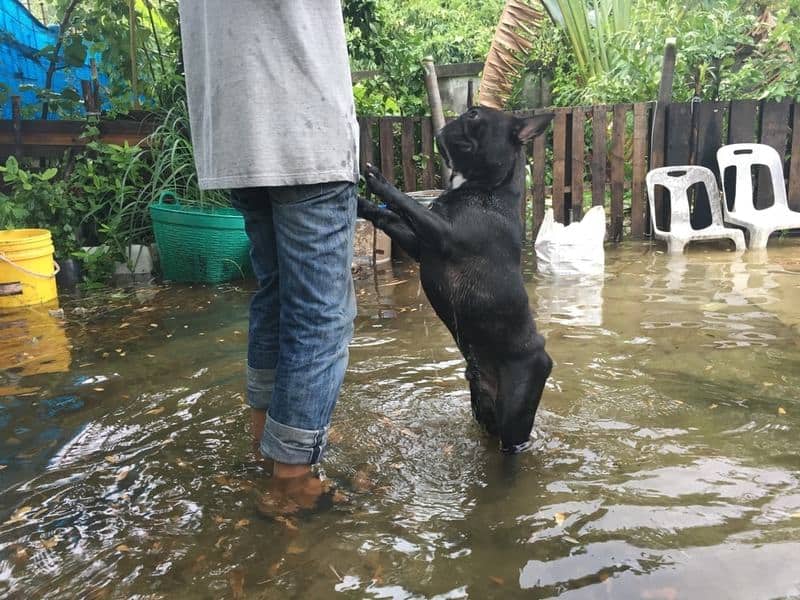“This post contains affiliate links, and I will be compensated if you make a purchase after clicking on my links.”
Even when the immediate risks of extreme weather and rising floodwaters have passed, the weeks and months that follow can pose serious risks to our pets. Here’s what those affected by Hurricane Ida will need to watch for!
Hopefully, those living in flood-prone regions are already aware of how to prepare ahead of the storm.

What pet owners frequently forget to plan for, however, is how to survive the flooding aftermath and the serious risks posed in the weeks and months that follow.
“In the aftermath of a natural disaster, both physical and mental health hazards abound. Overcrowding in pet shelters or pet-approved human shelters increases stress, which in turn decreases immunity,” Petplan’s staff veterinarian, Kim Smyth explained.
“Your pet may be exposed to infectious diseases, both in floodwaters and on dry land in crowded shelter environments. Pay close attention to your pet’s health as you navigate the long journey of recovery from a natural disaster. Post-traumatic phobias in pets are common following natural disasters–changes in behavior, appetite, or appearance should all be addressed by a veterinarian as soon as possible.”
Health hazards that pet owners affected by flooding and in the aftermath of massive summer storms include:

Water Woes
While the flooding that follows a significant storm poses immediate risks to the safety of our pets, the standing water left behind for weeks or months is just as dangerous.
• Floodwaters can be tainted with toxic chemicals, as well as wildlife-borne diseases like Leptospirosis, a bacterial disease that is particularly problematic in wet conditions.
• Standing water also attracts mosquitoes, which can carry diseases and parasites, like heartworms, to unprotected pets. Keep pets away from floodwaters and keep a few months’ of heartworm preventative on hand at all times so you can stay up to date with doses no matter what.
• Flooding can also alter landscapes and obliterate scent trails, which can confuse your pet and cause him to become disoriented. Don’t let pets roam outside off-leash, and be sure to keep contact information current on their microchips in case they get lost.
Smyth added, “Pets who have near-drowning accidents can succumb to fluid buildup in the lungs as much as 48 hours after the event. If your pet struggled to evacuate through floodwaters, please keep a close eye on his condition for at least 48 hours, even if he seems normal.”

Dangerous Debris
Depending on the severity of the storm, debris from destroyed structures, downed trees, and trash can hang around long after floodwaters recede.
• Never let pets climb on debris or nose through trash, as they can suffer lacerations, abrasions, or broken bones from falls.
• Additionally, curious canines could find unsavory snacks that can lead to intestinal obstruction, bowel perforation, or poisoning.
Stress Test
We’ve talked about how noise phobias can affect pets during storms, but plenty of stressors can make the aftermath just as upsetting for our furry friends.
• Cats, in particular, are vulnerable to anxiety caused by changes to their environment, but even a usually plucky pup can find himself frazzled in unfamiliar situations – like if you are displaced, or if you foster displaced animals for friends, family, or neighbors.
• If you do take in additional animals, keep non-household members separate from each other to minimize the potential for negative interactions.
• Take note of common canine stress signals like yawning, licking, or chewing when no food is present, excessive shaking as if to dry off, and freezing when touched. Cats signal stress through excessive vocalization, inappropriate elimination, and even vomiting. Exercise and play can help alleviate anxiety, but it is a good idea to keep your vet’s number on hand to discuss any concerns that crop up.
“Remember that you comfort your pet as much as he comforts you in stressful times,” Smyth adds. “Do your best to stay together after evacuation, but if you must separate, make sure he/she is wearing up-to-date contact information or in a pet carrier that is clearly labeled. If your pet is microchipped, make sure the microchip company has up-to-date contact information for you.”
Spores of Trouble
Although toxic black mold poisoning has not been widely documented in pets, two cats who survived Superstorm Sandy succumbed to the toxin.
• Because mold spores in the lungs can cause long-term respiratory damage and other health issues not just to your furry friends, but to your entire family, it is absolutely critical to have your house checked if you’ve sustained flood damage. If you notice your pets scratching themselves or chewing on their extremities or at their skin, or your pet exhibits extreme lethargy, wheezing, coughing, struggling to aspirate, bleeding from the nose, or disruption in regular eating habits, your pet may be suffering the long-term effects of black mold exposure.
“Waiting until a natural disaster strikes to think about evacuation plans puts your entire family at risk, especially your four-legged family members,” says Smyth. “Have a disaster preparedness plan that includes pets in place, so if the worst happens, you know where you’re going and what you need to take with you. Areas that have been damaged by natural disasters may not be accessible for weeks–never evacuate without your pets.”


















Cynthia Lee DeLuca
says:PATHETIC! Those who can do things like this to animals I do not consider to be human beings. They are extremely inhumane & it is my opinion those lives DON'T matter!